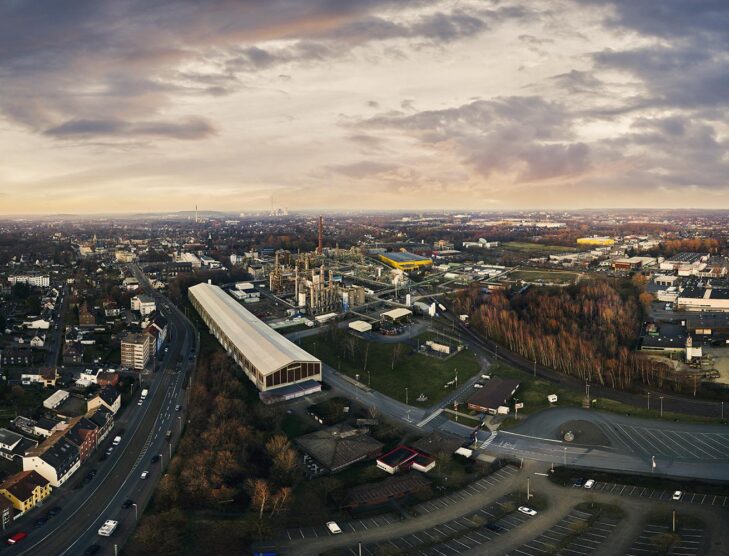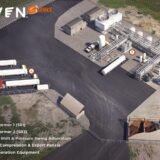
Evonik and Siemens Energy work on electrolyzer project in Herne
Evonik, a specialty chemicals company headquartered in Essen, Germany. is investing in a pilot electrolyzer at its site in Herne, Germany, to produce green hydrogen as a starting product for isophorone diamine (IPDA). PDA is a key raw material for rotor blades for wind turbines.
In an accompanying project, Siemens Energy is researching how this new electrolysis technology stands up in industrial use. The project consortium, which started at the end of 2022, will run until mid-2025.
Both the investment and the research project receive funding from the Federal Ministry of Education and Research.
In Herne, Evonik and Siemens Energy are testing a new generation of the electrolysis system for green hydrogen in a complex integrated production system that is typical for the chemical industry. Herne is a model for a chemical park with fluctuating, demand-driven hydrogen requirements.
“Green hydrogen is the missing piece in the energy transition puzzle. By funding the H2annibal project, we are supporting research into innovative hydrogen technologies in real conditions in a chemical plant. In this way, we are speeding up the transfer from science to industry and supporting the ramp-up of the hydrogen economy in Germany,” said Judith Pirscher, state secretary at the Federal Ministry of Education and Research (BMBF).
The Federal Ministry of Education and Research is providing total funding of around EUR9.3 million (USD10.2 million) for these two projects.
“We are investing massively in green growth to position ourselves more sustainably. To reduce our Evonik Industries AG carbon footprint, we intend to invest a total of EUR700 billion (USD767 billion) in production processes and infrastructure group-wide by 2030. Hydrogen electrolysis in Herne is a key element in that,” said Maike Schuh, CFO of Evonik.
Evonik and Siemens are driving forward the industrial transformation in the area of climate protection precisely where the Hannibal mine extracted hard coal until about 50 years ago.
“In the H2annibal project, we are testing a new type of electrolysis technology and therefore making a contribution to reducing CO2 emissions and, at the same time, safeguarding the sustainable supply of hydrogen and oxygen to our production facilities in the mid-term,” said Rainer Stahl, manager of the Herne site.
At present, the hydrogen used by Evonik in Herne is fossil-based. In the future, green hydrogen should be produced directly at this site using a PEM (proton exchange membrane) electrolyzer from Siemens Energy with rated power of 8 megawatts (MW). This will be operated with renewable energy. Green hydrogen from this electrolyzer could meet up to 45% of the hydrogen and, in addition, 100% of the oxygen required at this site. In the electrolysis process, water is split into hydrogen and oxygen with the aid of electricity. Using the electrolyzer could avoid 12,000 metric tons CO2 a year.
“Avoiding greenhouse gas emissions is particularly difficult in the industrial sector. We need innovations and strong partnerships to find new technological routes that drive forward the transformation of industry,” said Manuel Mundt, vice president, Finance for Sustainable Energy Systems at Siemens Energy.





.png)





